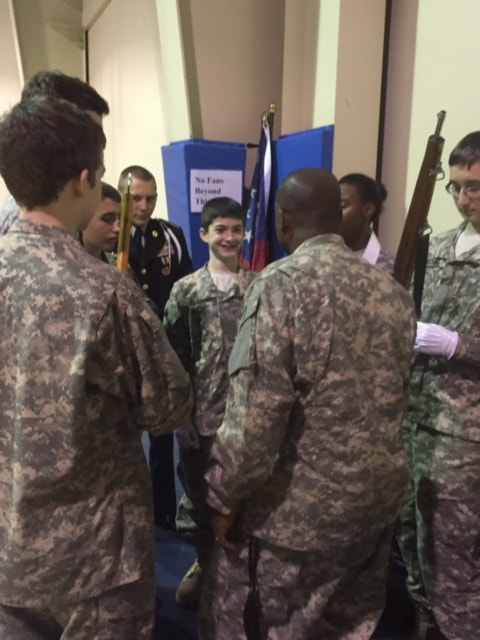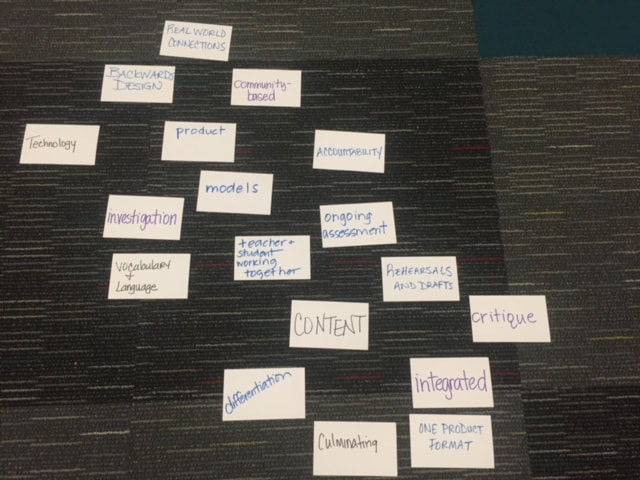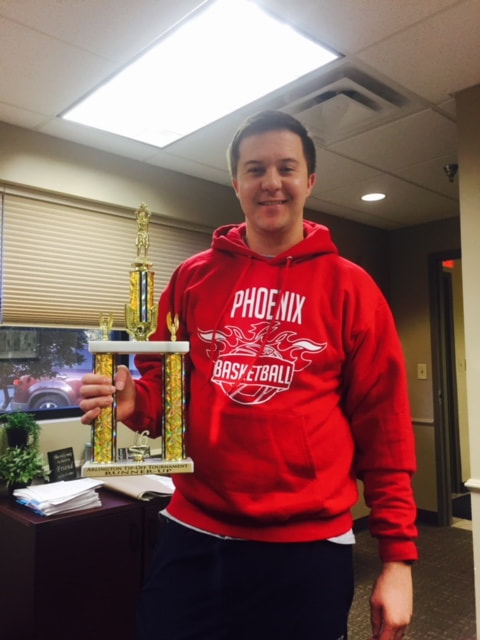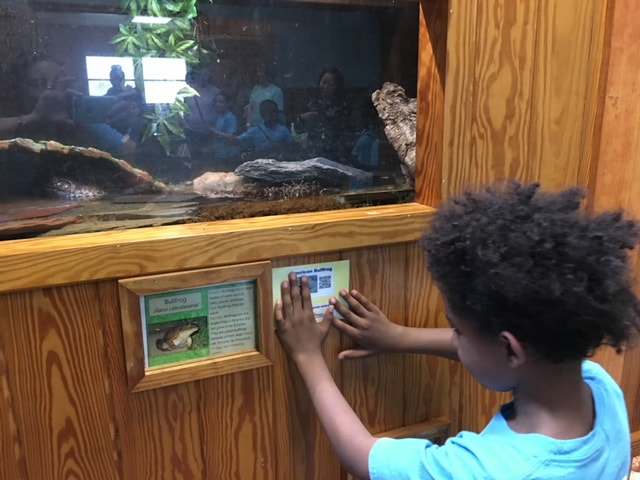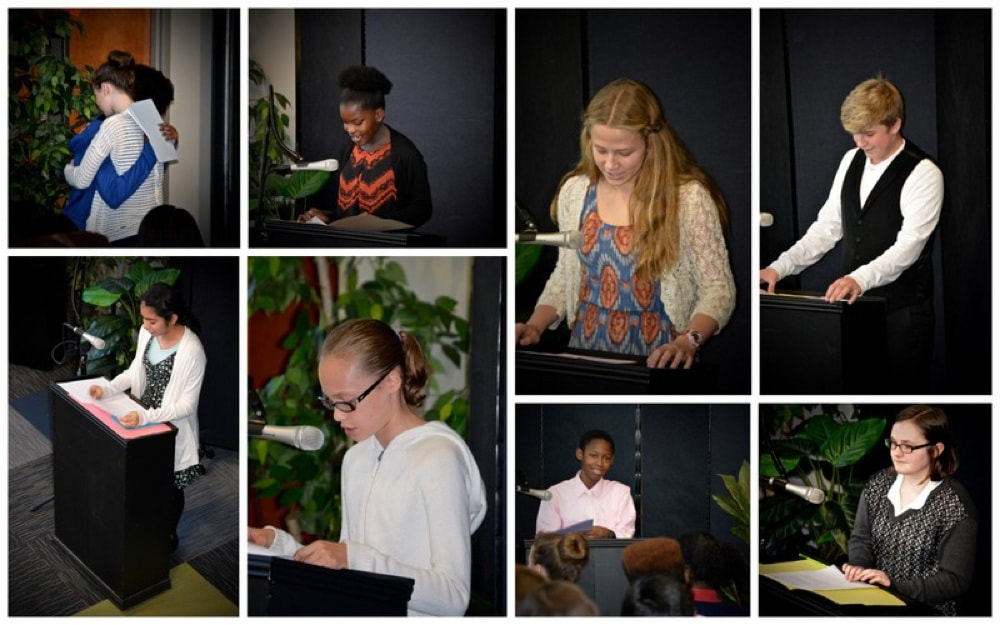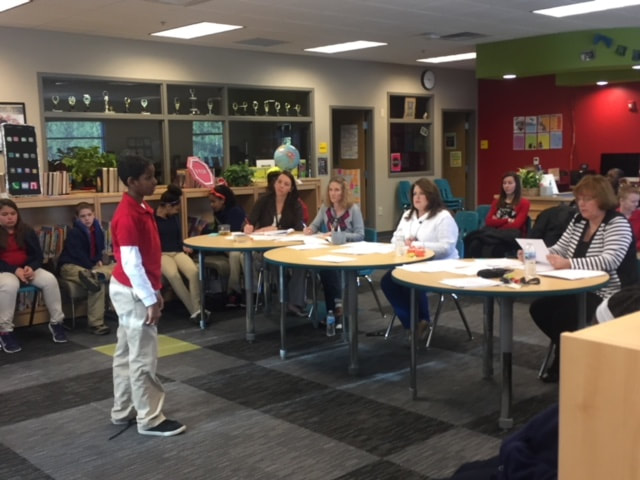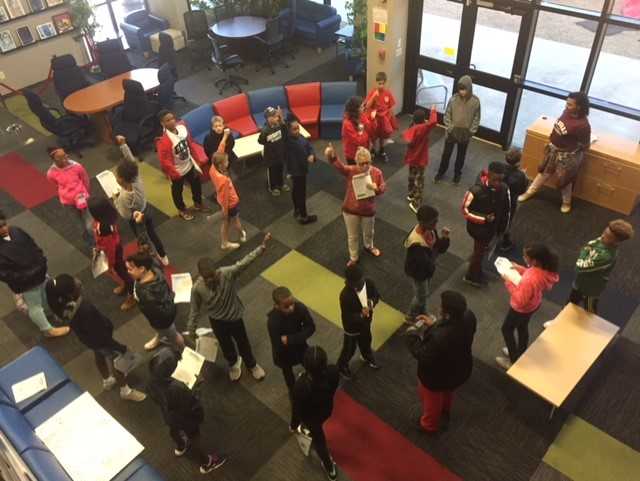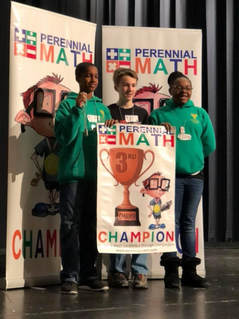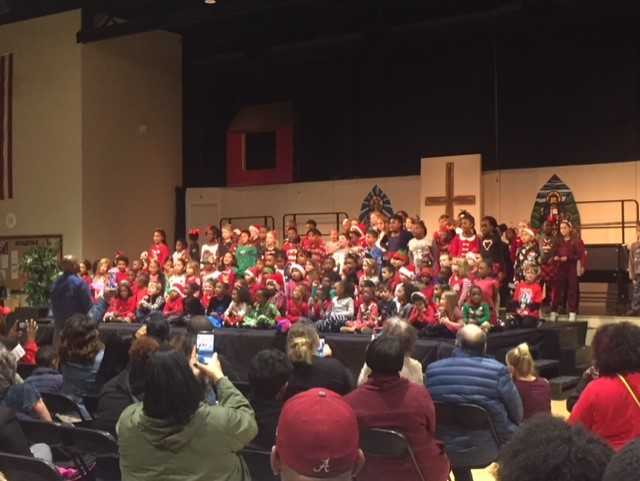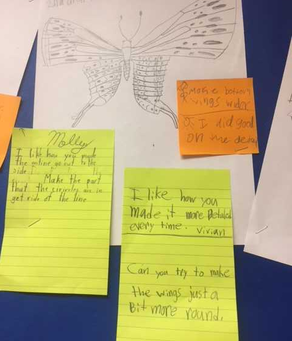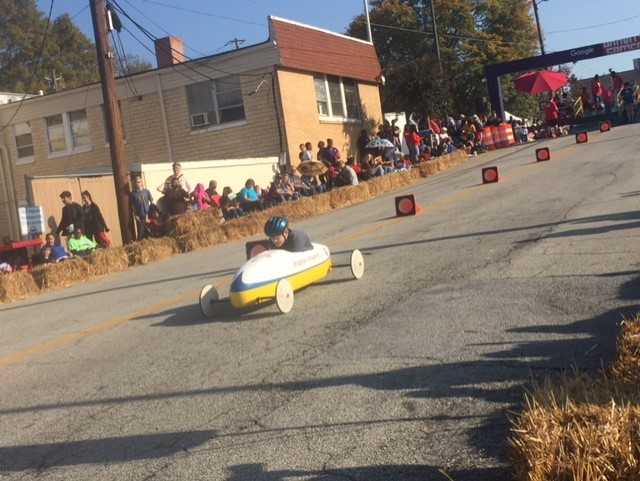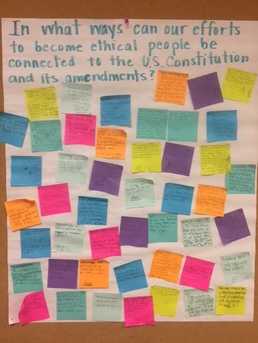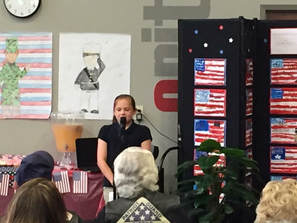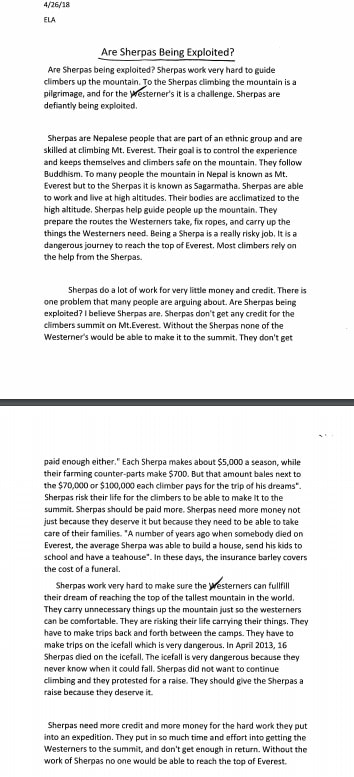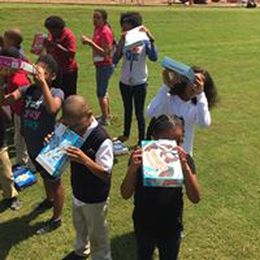Claim 1
Students have improved in their ability to create high quality work.
Doing Work that Matters
The Dimensions of Achievement with its focus on high quality student work helped us to look at student work through a different lens. Intentional focus on complexity, craftsmanship, and authenticity has increased our students’ ability to create high quality work across all grade levels. Over time, our students have demonstrated growth in their ability to create complex work that includes multiple perspectives. Brighten students have become better at demonstrating craftsmanship in their wonderful ideas and execution of final products. In addition to student work increasing in complexity and craftsmanship, students are beginning to see that they can create work that matters to them and the community by tackling real world issues. Students see their work living outside of the school. The work of Brighten students can be seen across the state of Georgia in museums, zoos, and welcome centers. Our students’ work has reached across the globe to other countries like Somalia and Egypt as we work to raise money for clean water and access to books.
Our Starting Place
Prior to being a member school of EL Education, we branded ourselves as a project-based school. Our students would often engage in projects that would showcase their learning through some sort of product (powerpoint, diorama, poster) and they would present their learning to the class. Prior to implementing core practices centered around Planning for and Supporting High Quality Work (Core Practices 6-9 and 12), the work students would submit often looked like it was completed in a hurry, was completed by parents, or was not in alignment with the rubric. In short, prior to EL Education, the students used the projects to demonstrate their learning; they were not used as the vehicle to learn.
In 2014-15 we began increasing our understanding of EL Education and intentionally focused on craftsmanship and the core practice of using models, critique, and descriptive feedback to produce high quality work (Core Practice 12). Our QWP from December of 2015 (the only one we completed that year as it was our discovery year) showed that our students were revising their work and completing multiple drafts. The student work observed showed an increase in craftsmanship through better formatting and attention to detail. The student work analyzed identified some weaknesses in complexity and authenticity that needed to be addressed in the 2015-16 school year. It was noted that the student work was often short-term assignments that were not designed around issues/formats from the world outside of school. Students were not looking at issues from different perspectives and often lacked a connection or awareness the big concepts. We noticed our work lacked authenticity. We seldom had an audience outside of the school and we had few artifacts that represented the professional world.
In 2014-15 we began increasing our understanding of EL Education and intentionally focused on craftsmanship and the core practice of using models, critique, and descriptive feedback to produce high quality work (Core Practice 12). Our QWP from December of 2015 (the only one we completed that year as it was our discovery year) showed that our students were revising their work and completing multiple drafts. The student work observed showed an increase in craftsmanship through better formatting and attention to detail. The student work analyzed identified some weaknesses in complexity and authenticity that needed to be addressed in the 2015-16 school year. It was noted that the student work was often short-term assignments that were not designed around issues/formats from the world outside of school. Students were not looking at issues from different perspectives and often lacked a connection or awareness the big concepts. We noticed our work lacked authenticity. We seldom had an audience outside of the school and we had few artifacts that represented the professional world.
Improving as We Go
The 2015-16 school year started with an intentional focus on project planning and reading/writing across the disciplines (Core Practices 8, 13, and 14). Students became more engaged in projects based on core literacy standards that would last several weeks. Students improved in their ability to give kind, specific, helpful feedback and they utilized models of the real world as their mentor texts in creating their projects. When we looked at the work from the 2015-16 school year we noticed improvement in complexity and authenticity. About 50% (from zero the prior year) of the samples studied had elements of complexity. Student centered research was more evident. For example, our third grade students studied animals found in various regions in Georgia and created trading cards to give to students in second grade. Four of the grade levels tackled real world issues; two grade levels did work that contributed to the community. Our second grade students researched the animals found at Cochran Mills Nature Preserve and created a class book that summarizes what they learned. The book was presented to the media center and Cochran Mills. Through this project, students began working with experts and connecting to people outside of the school. Although we were proud of our success, we noted several areas where we could continue to develop in each attribute of quality. We noticed the need to increase craftsmanship in citing our sources and providing more content based details in our writing. We wanted to increase authenticity by allowing more student voice and continue to incorporate formats from the real world into our project plans. We also noted our students need to continue to practice working with multiple perspectives and engage more often in work that is complex.
Implementing Case Studies, Field Studies, Experts, and Expeditions
With a better understanding of the attributes of quality, the school continued to push for higher quality of student work in the 2016-17 school year. Intentional focus on creating case studies (and some grade levels were ready for expeditions) helped to clarify the notion that you can use a narrow topic as a tool to introduce big ideas/concepts (Core Practices 6 and 9). Case studies focus on becoming an expert on a specific topic and then applying it to the broader concepts. This approach helped our students better see connections and compelled them to create work that was more authentic and meaningful. As a result, when we looked at student work for the 2016-17 Quality Work Protocol (QWP) we noted improvements in complexity and authenticity.
In fact, the QWP noted research was present in each grade level, and transfer of understanding between the topic and the concept was present. Our 8th grade students saw the connection between the book, A Mighty Long Way, and the need to address intolerance and bias in middle school students in our District. They created curriculum materials in the form of tableaus that were used across 6 middle schools to help students begin to talk about issues such as race and bullying. Student work demonstrating multiple perspectives/viewpoints were beginning to surface, and better integration was evident in student products (writing, presentations, etc.). For example, our seventh graders read the book Peak, a coming of age story that chronicles an expedition to the top of Mt. Everest. The students incorporated this novel into a study on the impact of tourism on Mt. Everest. Students took a stand for/against summiting Mt. Everest as they looked at the environmental and economic impacts.
The QWP also noted that students were more frequently learning from and with real world formats, discussing and analyzing controversial topics, and engaging in work that requires original thought and reaching audiences outside of the school. In fact, it is the voices of our second grade students who welcome visitors to Cochran Mills Nature Center when they come to learn about the habitats of animals local to Georgia.
After reviewing the student work, the staff wanted to continue to increase the use of experts across all levels of the school and increase the presence of work that contributes to a better world. We also noted the need to refocus on craftsmanship and build in some structures to improve student editing and revision before the final product is submitted.
In fact, the QWP noted research was present in each grade level, and transfer of understanding between the topic and the concept was present. Our 8th grade students saw the connection between the book, A Mighty Long Way, and the need to address intolerance and bias in middle school students in our District. They created curriculum materials in the form of tableaus that were used across 6 middle schools to help students begin to talk about issues such as race and bullying. Student work demonstrating multiple perspectives/viewpoints were beginning to surface, and better integration was evident in student products (writing, presentations, etc.). For example, our seventh graders read the book Peak, a coming of age story that chronicles an expedition to the top of Mt. Everest. The students incorporated this novel into a study on the impact of tourism on Mt. Everest. Students took a stand for/against summiting Mt. Everest as they looked at the environmental and economic impacts.
The QWP also noted that students were more frequently learning from and with real world formats, discussing and analyzing controversial topics, and engaging in work that requires original thought and reaching audiences outside of the school. In fact, it is the voices of our second grade students who welcome visitors to Cochran Mills Nature Center when they come to learn about the habitats of animals local to Georgia.
After reviewing the student work, the staff wanted to continue to increase the use of experts across all levels of the school and increase the presence of work that contributes to a better world. We also noted the need to refocus on craftsmanship and build in some structures to improve student editing and revision before the final product is submitted.
Planning for and Supporting High Quality Work/ Incorporating Fieldwork, Experts, and Service Learning
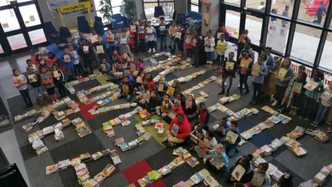
By the 2017-18 school year, all students were participating in long-term integrated projects at least two times a year. The students were deeply engaged in literacy based projects that incorporated science and social studies content. As a school we set a goal to increase authenticity of student work by better integrating experts and service learning (Core Practice 7). Students were working with experts outside of the school as they engaged with orinthologists, animal rights activists, and civic leaders. They were doing work for organizations across the world like initiating an animal rights campaign for an elephant sanctuary in Tennessee and sending books to an under-resourced school in Africa and in South Carolina so the students could have better access to books. Our third graders argued that access to books was a matter of educational equity; thus elevating their need to contribute towards a solution. They began to see that their work not only matters, but it helps to contribute to a better world.
The QWP at the end of the year found many opportunities to celebrate student growth in all areas of the attributes of quality. Student work had evidence of multiple perspectives in almost every grade level (up from 50%) from the prior two years. Students were writing compelling arguments, doing more complex research, and engaging in and with more complex text. Our seventh grade students studied the conflicts in the story Peak (a story about a young man summiting Mt. Everest) and used these conflicts as a springboard to the real world conflicts that exist with summiting Mt. Everest today. Student work also improved in craftsmanship. The quality of writing (editing and revision) was noted as well as the integration of art and graphic design within the final product.
After studying about the benefits of birds, first grade students worked in art to create beautiful pictures of birds so they could sell the art to donate the proceeds to a local bird sanctuary. The QWP simply stated “beautiful work from students.” When looking at authenticity, the work showed that students were engaged in service learning , working with experts, and engaging audiences outside of the school. This can be seen in the work of our fifth grade students. These students created historical narratives written from the perspective of WWII Veterans they interviewed. These narratives are on display at the WWII Museum in Anniston, Alabama.
The QWP at the end of the year found many opportunities to celebrate student growth in all areas of the attributes of quality. Student work had evidence of multiple perspectives in almost every grade level (up from 50%) from the prior two years. Students were writing compelling arguments, doing more complex research, and engaging in and with more complex text. Our seventh grade students studied the conflicts in the story Peak (a story about a young man summiting Mt. Everest) and used these conflicts as a springboard to the real world conflicts that exist with summiting Mt. Everest today. Student work also improved in craftsmanship. The quality of writing (editing and revision) was noted as well as the integration of art and graphic design within the final product.
After studying about the benefits of birds, first grade students worked in art to create beautiful pictures of birds so they could sell the art to donate the proceeds to a local bird sanctuary. The QWP simply stated “beautiful work from students.” When looking at authenticity, the work showed that students were engaged in service learning , working with experts, and engaging audiences outside of the school. This can be seen in the work of our fifth grade students. These students created historical narratives written from the perspective of WWII Veterans they interviewed. These narratives are on display at the WWII Museum in Anniston, Alabama.
Click on the images below to enlarge.
Looking Back...
When looking at our students’ ability to create high quality work before partnering with EL, we saw that project work happened after the learning took place. We also noted that projects were primarily done at home and the main audience was often the teacher. Our projects lacked authenticity and often did not connect to service learning.
Looking Forward...
As we move into the next school year we hope to continue to increase in our ability to help students see the impact of their work. We want to bring the attributes of quality more to the student level and engage them in the planning process to create work that matters and contributes to a better world. We feel harnessing their voice and lighting the fire to become agents of change will help to motivate and inspire the students to continue to do more than they thought possible in creating high quality work.
